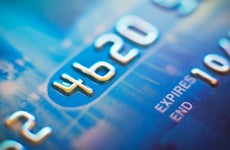Personal Finance
Use Bankrate's advice and tools to help make all of your personal finance decisions.
Latest Articles
-

Can you use your cellphone bill to build credit?
Use cellphone bills to aid credit though your provider doesn’t report them to bureaus
6 min read Jul 24, 2024 -

Should you cancel an unused credit card?
It might seem counter-intuitive, but sometimes you should keep a credit card, even if you don’t use it. Cancelling credit cards can damage your credit rating.
6 min read Jul 24, 2024 -

Current credit card interest rates
View current credit card rates based on Bankrate.com’s weekly national survey of large banks and thrifts.
1 min read Jul 24, 2024 -

How could a Harris presidency impact your finances? Her record offers some clues — and diverges some from Biden
Americans have about 100 days to get to know the new face of the Democratic ticket.
10 min read Jul 24, 2024 -

Am I responsible for debts from my deceased spouse?
Before you give in to a debt collector, know your rights.
5 min read Jul 23, 2024 -

What is a FICO score?
Building a good FICO credit score is one of the best things you can do for your financial health. Here’s what your FICO score entails.
6 min read Jul 23, 2024 -

What is a balance transfer fee? Here’s everything you need to know
Balance transfer fees are hard to avoid, but they aren’t always a bad thing.
8 min read Jul 19, 2024 -

How many credit cards is too many?
The number of cards that’s right for you depends on how many you can easily manage.
11 min read Jul 18, 2024 -

Pros and cons of debt consolidation: Is it a good idea?
Weigh the pros and cons to decide if debt consolidation is right for your situation.
6 min read Jul 18, 2024 -

How to build credit with a secured credit card
If you have a low credit score or a limited credit history, you can start building credit with a secured credit card. Here’s what you need to know.
6 min read Jul 18, 2024